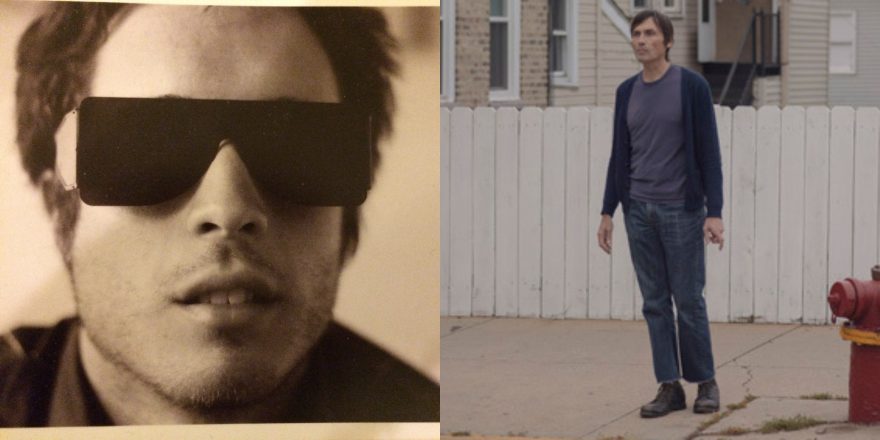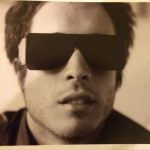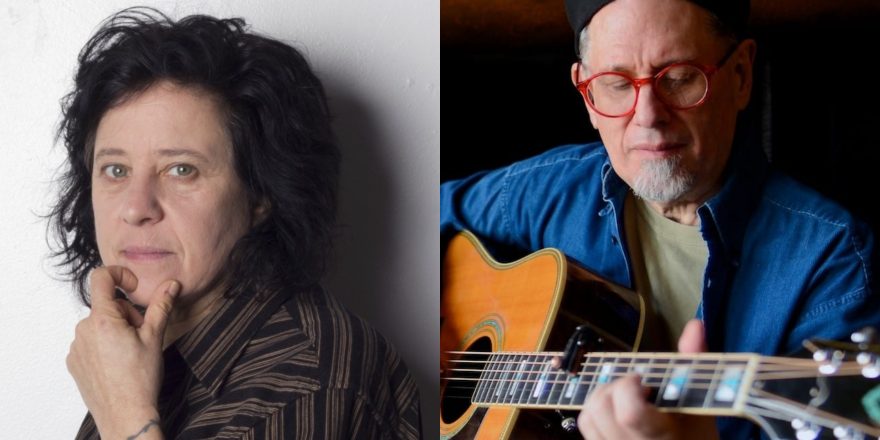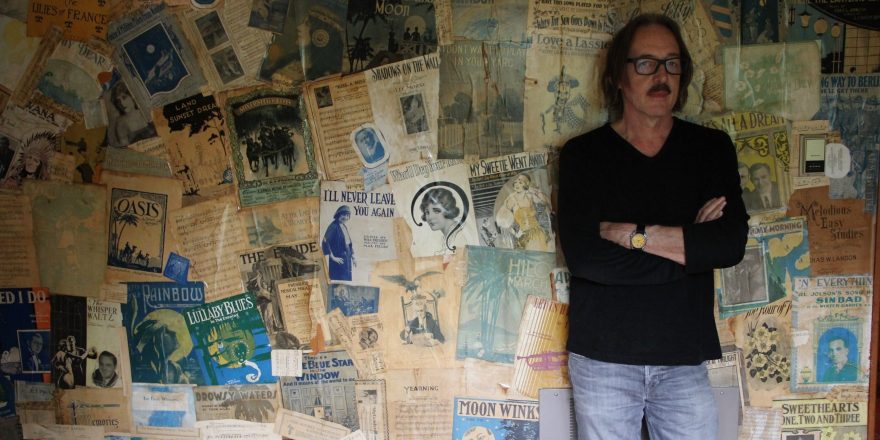Chicago-based guitarist Bill MacKay recently released a collaborative album with cellist Katinka Kleijn called STIR on Drag City, as well as a solo album, Fountain Fire, earlier this year. Bill Nace is an experimental musician from Western Massachusetts who’s collaborated with a who’s-who in the modern music world — perhaps most notably Kim Gordon of Sonic Youth, with whom he plays in Body/Head. The two Bills, fans of each other’s work, recently spoke by phone about music, robots, and a fear of air travel.
— Josh Modell, Talkhouse Executive Editor
Bill Nace: Chicago seems like a scene where everyone knows each other and it seems folks help each other out with their projects.
Bill MacKay: People do overlap a lot. They hybridize and what they’re doing blends into other things in ways that doesn’t seem to happen so easily in other places.
Nace: It’s really cool. People don’t necessarily do one kind of music but they’ll play on their friends’ records. I love that.
MacKay: Yeah, people frequently bleed into other projects. It feels like a really vital time now, in the last couple of years.
Nace: A couple of the tracks you sent me were duo tracks. Is some of that improvised? Do you put a band together and then kind of play your tunes? The one you sent me with, is that a violin player? I can’t tell.
MacKay: Oh, yeah, cello. Katinka Kleijn.
Nace: That’s excellent. It reminds me a little bit of Amps for Christ, like how they deal with more traditional folk music but then add the noise or other kind of fuzz guitar in there.
MacKay: Did you say Amps for Christ? Is that the group?
Nace: Yeah, it’s this guy Henry Barnes. He used to be in this group, Bastard Noise. Do you remember that band? They had a band called Man Is the Bastard and then they had a side thing called Bastard Noise, and that guy, Henry, has a thing called Amps for Christ and he kind of builds his own circuits and his own guitars. You would love it.
MacKay: Katinka plays with lots of ensembles and stuff, like International Contemporary Ensemble, and she’s been with the CSO in Chicago for a couple decades. We’ve had this collaboration six, seven years I think, and this is the first record that we’re doing together, and so we’re really excited. Folk music is always something in there, but bringing in improv noise and melodic parts. You know, I really am kind of a melody man, but I really like to fragment all of that, too, with the chaotic elements.
Nace: Do you guys work that out beforehand?
MacKay: They’re compositions but then they go off into improv and then sometimes they return, or the themes will return.
Nace: Do you tour often, or do you kind of work up material for a record and then when that comes out hit the road?
MacKay: Man, it seems like it’s been kind of really a little mix of all that. Like, I would set aside a few weeks and tour after the record, but also lots of cool invitations have come in, and I played those shows supporting Bill Callahan and Steve Gunn.
Nace: Oh, great. I love Steve. Kim and I did a few short tours with him and a really old friend of mine, John Truscinski, of a duo called Gunn-Truscinski Duo. We’ve been doing a quartet thing with the four of us doing a live score to this Andy Warhol film called Kiss.
MacKay: How did you feel about how the recording came out, and was it different than the performance ended up being or did you try to approach it to recreate it, and that kind of thing?
Nace: It was different. The recording was the first time we had all played together, and we got there and the whole thing was documented. There were cameras set up, and then a couple people from the museum hanging out. They like to document everything for their archives. But it was not enough people to have the energy of a show like you’re performing, but it also wasn’t like a normal studio setting. It was a great experience. It was just a little odd in terms of trying to find where the music was between all of us.
MacKay: Having no people is one thing, in a room just playing, like a studio, or the energy of a true crowd, but I think the weirdest one is the middle where you have a small amount of people, which is not enough for a mosh pit or not enough for extended hollering and shouting, you know? It has to be a special crowd for that crowd to be the kind that really lifts the performance, you know?
Nace: Right. And they’re watching in a different way. They’re watching in a kind of removed way. They’re watching you through a camera or checking the levels on their recording.
MacKay: But I was really interested in hearing it, and I asked Steve about it and he said that a recording is available just at the museum, I think. I really dig that museum, too. I like the museums in Pittsburgh. There’s an interesting scene with that, like the Mattress Factory and the Warhol.
Nace: The Warhol, they brought us up into the archives and showed us all this Velvet Underground ephemera and films that I’ve never seen, so we were all pretty psyched about that. Like handwritten lyrics from Lou and footage that I’d never seen before.
MacKay: Cool. I haven’t seen that there, but I would be all over that, too.
Nace: You’ve got to get a gig there and then ask them to take you up.
MacKay: I was at that museum several times. So, you can see there’s a bullet hole in the jacket?
Nace: They just told me that. It was either the one he was wearing when he got shot or the one that he was wearing when he died. It was heavy.
MacKay: I think it’s cool how they’ve expanded to have you guys playing there, have all these shows and have different kinds of events there. I think it took a while to get going. It seemed like it was just kind of centered on Andy at first.
Nace: Yeah, yeah. I think this was the first record they’d ever done, so I don’t know if that’s something that they’re going to keep doing, or what, but that was pretty cool.
◊
I think the language with records is so different now, like everything’s so immediately kind of historicized and put in the context that you should hear it, and you get this three or four paragraph thing about why you need to own this and why it’s the most important release that year, and duh-duh-duh-duh-duh. I remember when you used to just get a catalog from a label or a distro and it was just a list of what they had. You know, obviously you can split the difference; having info and context on stuff is great, too, but there is … You used to just go down and a name would sound cool like, “Oh, A Handful of Dust. What is that?” I think it was the same with bands, like maybe the band that didn’t have a picture or it was blurry… You filled in a lot of what the band was. There’s not even the space to engage that way because you’re immediately told what it is and how to feel about it. But I get it, too, because there’s so much stuff out that it’s like, how do you have it cut through and feel like you’re going to have it be heard?
MacKay: I couldn’t agree more. I feel it almost started with the visual art world, but I’m not sure if it was just a simultaneous blooming, but I suddenly realized at one point that everybody was explaining everything to me. I went to a gallery and there were these lengthy descriptions of every painting next to them, telling you what it’s about, and you’re like, “What happened to me looking at this thing and being able to have it activate my imagination?” It really started to drive me crazy and I agree that people are doing it so that everybody has to have a narrative and story for every song and album and where they came from, and blah-blah, and to try to grab that interest.
Nace: Well, it’s like how reissue culture with records is huge now. I think it’s cool that a lot of people are going back and filling in the blanks. I think it’s cool to kind of get to go back and re-represent things that maybe got lost in the shuffle. But looking back so much, there’s so many… Every day everything’s getting reissued. It’s crazy. I’m not like, “Ugh, reissues.” But, it’s just interesting, I guess.
MacKay: It’s funny how trends take off and they seem to develop like somebody’s throwing gasoline on them, they’re going so fast. They burn with this intensity now, like a trend takes off and things have a big difference in the inertia. “Wow, this great little known group from Cleveland has a five LP set.” You know? It’s super vital. But, it is strange because I think knowing some people, too, in various portions of that, or where the reissue is part of their business, there’s a little bit of a looking-back mania. I wonder how across the board that is. I remember like a few years back when they really, maybe it’s been two decades now, it was like the first wave of when films were using the same story, just doing a new version of an old film.
Nace: It reads different now I think because I think it feels cheap to us. But that’s such a staple of Hollywood, like in the 1930s they would do a film two years later.
MacKay: Oh, shit. You’re right. I forgot about that. I’ll be going, then.
Nace: I think it’s the nature of stories like that, to want to retell them or tell them from a different perspective or with a different group. But, I do feel like it does read different now. It just feels like Disney’s just kind of feeding us more garbage, you know?
MacKay: Maybe that’s the whole thing. With me, it probably has a lot to do with how I view the trashiness of Hollywood productions in general these days. Like, if I see it, I’m sort of prejudging it, assuming it’s going to be a terrible remake because most of the movies they’re doing are terrible. But occasionally there’s some gold in there. I don’t know if you’re a fan of Tarkovsky and Solaris and stuff like that.
Nace: Oh, yeah. Love it.
MacKay: I had read the book, Stanislaw Lem, and I thought the original movie followed it quite closely. There’s some changes and the ending is different a little bit. I thought the new one that Soderbergh did with Clooney was pretty great. I don’t know if you’ve seen it…
Nace: I saw it so long ago, I didn’t like it at the time, but I also… I think it was pretty close to when I’d seen the original, too, so it may not have gotten a fair shake. Did you see the new Blade Runner?
MacKay: No, and that’s another one that was on my mind. Is it worth a look?
Nace: I loved it. It’s kind of a sequel. Harrison Ford’s character is in it, but he’s older. It’s not a reboot.
MacKay: I was thinking about Blade Runner because the book had come up in conversation. I’ve been kind of pondering this really strange thing, and I wonder what you think about this, if it’s just sort of that fear mongering or something, but I kept seeing these articles about how we’re going to deal with these armies of malevolent robots in the future. They’re just going to be dying to take over society, you know? I don’t understand this ongoing conversation about robots having feelings, like are they going to become human or are they partially human?
Nace: Are we headed towards some kind of AI nightmare? I do see stuff constantly where I’m like, “Have these people not read sci-fi?” We know how this is going to end up and it’s not going to end up well.
MacKay: We’re fucked, right
Nace: Oh, yeah. We’re fucked.
MacKay: So, is it either the ecology that we are destroying, we’ll be destroyed by making it uninhabitable, or the robots, right?
Nace: There’s so many ways in which we’re fucked, at this point the robot thing’s just fun to think about.
MacKay: Maybe that’s the common enemy to unite humanity.
Nace: What I think about is more like the conditions that we’ll get, the levels at which people can exist. Like, how inhospitable and uninhabitable will things become that we’re like, I don’t know, going underground, in metal fucking tubes somewhere. I think we just tune up to whatever our surroundings are, which is kind of scary. Like, I can’t even remember not having a phone, or driving around without GPS. We adapt so quickly, which is great in some ways and kind of horrifying in others.
MacKay: It always seems to me to imply there’s a little bit of residue of fear in there that you’re not as capable as you were before you had these new technologies that are making things easier. We’re not going to be as capable if this disappears.
Nace: I just had some gigs down in Texas, and I took the train down. I had a lot of points because I take the train on the East Coast a lot. It’s not feasible money-wise, and it’s not feasible time-wise, but I loved it. It took me two fucking days to get there. It doubles the drive.
MacKay: Amazing.
Nace: It was just so slow. You can’t think about how fast you’re going. You can’t think about it in comparison to any other kind of travel, because it makes zero sense and you’ll go insane. But if you just get on there and settle in? I had a sleeper car. I loved it. I just tuned out. I didn’t have to do anything or be anywhere. I was a little antsy at first, and then once I got used to it, it was great not to feel like I was in a rush, or not to feel like I had to get anywhere. I loathe flying. I fucking hate it, and if I never had to do it again I’d be fine with that.
MacKay: I’ve always been envious of people taking trains across the country, because all that kind of travel to me is pretty meditative. I mean, especially on the ground, driving and long bus rides. There is something about that slow train just winding its way through the mountains and over the plains, doing its thing.
Nace: You’re not on the highway. You get a different view. I’ve done the bus cross country three times, and that’s a living nightmare. If I did that now, my brain would just… I wouldn’t be able to handle it. In my 20s, they had a thing where if you ordered it like a month in advance, you could go anywhere for like 59 bucks, so I went across the country a few times for like $60, which was great, but…
MacKay: You’re just worn ragged, right?
Nace: Oh, the bus is heinous. It’s like Guantanamo on wheels. But the train is like, there’s kind of a romantic thing. The train has something different, and there was more of a feeling I could sink into. The bus feels like it’s combative, like you’re at war with yourself and with the bus and the landscape. The train, there was something that I could kind of dig into that felt really meditative. I just did a tour over in Europe with Samara Lubelski, and obviously I flew over, but then once we were there we took the train the whole time and it was great.
MacKay: I started to see the vistas. In fact, once we started talking about that, in the back layer of my mind was just these fields and plains, you know? The train also is much older, so I think there’s a romance and there’s a historical kind of resonance to it, you know?
Nace: You feel like you’re kind of on this other tributary or something.
MacKay: It’s good to travel the way that is amenable to you. I was reading about Kubrick, and even though he had a pilot’s license, he had flown thousands of hours, he eventually gave up flight altogether and he would always take a boat, like a ship from Britain to the Sydney Orchestra.
Nace: I’m getting close to that, because I fucking hate it. To me, it’s like nightmarish. It’s kind of at phobia level for me, too. I guess Bowie didn’t fly for like five years. I don’t think it was his whole life, but there was a period there where he would take boats and trains. I just realized I shouldn’t be saying this, because now I’m never going to get asked to play a gig anywhere again. “We’re not paying for a weeklong boat ride for you to come play in our festival, dude.”
(Photo Credit: right, William Keihn)






